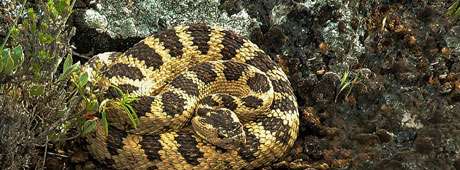No products in the cart.
The Twelve Junipers of Wapi

Look but Don’t Move
By Will Peterson
Photos by Roger Boe
Twenty years ago, the Craters of the Moon National Monument, so long confined to forty-five thousand acres, was extended by executive order to 750,000. It was the Big Lonely: elk, deer, pronghorn. A wolf or two. Wild birds from all over North America. And if you went in May and June, the wildflowers were going crazy. Bitterroot bloomed like a prom girl’s orchid. Rivers of scarlet monkey flowers flowed between the cinder cones.
In 2005, when the Great Rift Science Symposium was held at the Idaho Museum of Natural History, I convinced historian Tom Blanchard, who had helped organize it, and photographers Tim Frazier and Roger Boe, who had contributed photographs to it, that it was a positive loss if they had not seen the Old Junipers. The Rocky Mountain juniper that grows under Old Juniper Kipuka (a Hawaiian word related to “tabu,” so I use that spelling instead of “kapuka”) in the very heart of the intimidating Wapi Lava Flow is the oldest and tallest in the known universe.
On the day we went, meteorologists forecasted light wind for the Snake River Plain, but that’s a variable concept, like forecasting waves in the North Atlantic. When we rendezvoused at the southeast entrance, the wind was blowing tumbleweeds past us. The information kiosk advised water, food, a full tank of gas, and high-clearance vehicles with 4WD. It didn’t mention steel-belted radials but should have: lava rock along the road into Wapi Park can shred tires. A two-track veered south towards Wapi Volcano. We climbed over three-foot-tall lava tubes only to dive into alkali washouts. Like riding a mechanical bull. I glanced in the mirror to see a pickup pitching and yawing behind me, as if at sea. I cracked the pull-tab on an India pale ale and the jeep staggered up another lava tube. The wild brush danced around me. After an hour, the cinder cones of Wapi Park loomed ahead. The road got worse.
It rose between two rock knolls and then descended on the other side, where aspen lined the surrounding lava flow. The aspen were applauding, because they were happy to see us. They hadn’t seen anybody this year. I knew that, because knee-high grass and wildflowers flourished in the two-track. I led my faithful followers to the end of the cul-de-sac, where the Wapi Flow towered around us on three sides with the ancient cinder cones of Wapi Park at our backs. The wind wasn’t blowing that hard now. It kept playfully trying to take our tents to Wyoming—me doing the Marx Brothers routine where you put a rod in one side of the tent only to have the wind tear out the stakes on the other—when I heard Tom’s wife shout.
Snake!
What?
Snake.
What kind?
A rattler.
I went over.
Never pitch a tent next to the rocks, Florence.
She snarled, You’re a little late.
Where is it?
She pointed at a flat, lichen-mottled lava rock.
There. I was pounding a stake when it was right at my wrist.
Where did you say it was?
There. Are you blind?
I bent over, staring at the rock. I am, Florence. Half, actually.
This content is available for purchase. Please select from available options.
Purchase Only
Purchase Only

